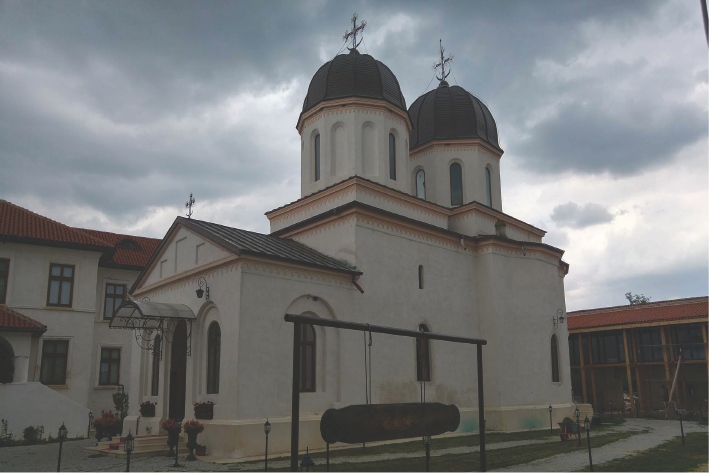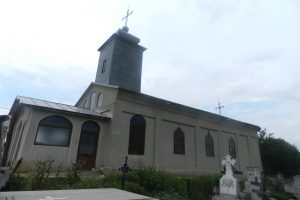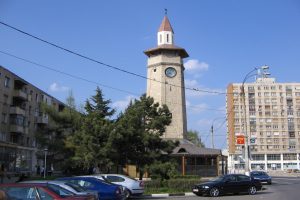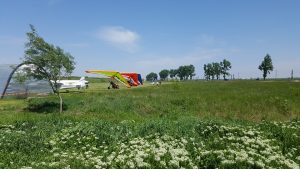

Dating – 1461
Comana Monastery is a religious edifice included in the list of historical monuments in Romania built by Vlad Tepes in 1461, with the role of monastery-fortress (ruined by the end of the sixteenth century).
The place where the monastery was built was once an island in the middle of the marshes and the access was done through a door located in the north of the precinct, after crossing a wooden bridge easy to fire in time of distress.
At the end of the sixteenth century (1588), the monastery was rebuilt by lord Radu Serban, using the ruins of the old convent, especially the precinct wall.
In 1609, after becoming ruler of Wallachia, Radu Serban paints the Comana monastery’s church, asking to intervene in the painting representing him, by adding the royal insignia. This inscription was not preserved, but replaced at the restoration in 1699 – 1700 with another one, of his great-grandson Șerban Cantacuzino, who will honor the reigning grandfather name, making mention of him in the inscription carved above the entrance, as the first founder of creation that he restored.
Radu Serban died in 1620 in Vienna where he had refuge when he lost his reign and was buried in the church of St. Stephen in Vienna. The husband Nicolae Pătrașcu of his daughter – Anca, son of Mihai Viteazul, dies in 1627 and is buried in the Serbian Church in Raab (today Györ in Hungary).
In 1640 Anca and his sister Elina will bring the royal remains home and bury them at Comana, and the common grave slab from Comana is made after 1640s.
In 1667, Draghici Cantacuzino the Elinas’ son is buried in Comana‚ who died in Constantinopole and brought in the country by his son, Șerban Cantacuzino. Also, here will be buried later Constantin Draghici the son of Draghici – the sword bearer, as evidenced by the inscription put on the grave by Serban in 1699.
Through these successive funerals it is revealed the passage of the Comana Monastery into Cantacuzino’s hands, family branch of Draghici, as church, royal edifice, becoming their burial place.
Soon after Drăghici burial and his son Constantin, Maria,will be buried at Comana, first wife of Governor Serban Cantacuzino, the second certified founder of the monastery.
Alongiside the Anca’s bones, another tomb, smaller, contains the remains of Mihail Pătrașcu, the son of Ancuta and Patrascu Voievod, child died of plague in 1655, in Cossack regions and reburied at Comana, probably after 7 years. At that time, his mother, Anca, was still alive, she probably died shortly before 1668.
Serban Cantacuzino gives Comana Monastery in 1699 a silver shrine in remembrance of parents Draghici and Pauna and of wifes Maria and Andriana; information indicating that they are buried at Comana.
In the same year, Serban Cantacuzino begin the restoration at Comana Monastery. The works of reconstruction were made in the spirit of renewals made in building technique during the reign of Constantin Brancoveanu, as a result of its outstanding cultural development along the three regencies almost successive: Matei Basarab (1632 – 1654), Șerban Cantacuzino (1676 – 1688) and Constantin Brancoveanu (1688 – 1714).
To this restoration, he adds to the existing cells new ones, repairs and rises the walls and adorns the building with an elegant gazebo on the north side.
Rising from the elegant balustrade, ten columns adorn it on three sides. Hard stone columns in one piece adorn the capital, and the base adorned with vegetable ornaments. Two of the ten columns at the ends, are recessed into the wall of the building and have capitals decorated with two-headed eagle, insignia of the Cantacuzino’s family. Semicircular brick arches supporting the ten columns give a touch of particular beauty to the entire construction.
In the precinct, Serban restores the church and replaces the old inscription with another one, where he is among the founders. This restoration of the monastery ends with displacement of ancestors in a mass grave.
Transforming the church into a Cantacuzino family „ crypt” explains both, Serban’s effort to restore the monastery in 1699 – 1700, and his return in 1703, when he builds a chapel on site and strengthens it, by customs.
In august 1709 Șerban dies and it will be, in his turn, buried at Comana. Șerban Cantacuzino tomb is not known at Comana; it was destroyed along with other tombs in 1854 by Greek monks.
In 1728, Comana Monastery was dedicated to the Holy Sepulchre, by Nicolae Mavrocordat, because there were no direct heirs of the founder to care about the fate of the church founded. Through these worships, the monastery started to lose its fortunes and estates.
Degradation of Comana, signaled by Neophyte of Wallachia, is increasing along Phanariot reigns and is outlined in a series of documents of donation subsequent to this worship, documents prepared in the period 1728 – 1814 and signed by the rulers Nicolae Mavrocordat, Ioan Mavrocordat, Grigore III Ghica, Constantin Mavrocordat, Alexandru Ipsilanti, Alexandru Moruzi, Constantin Ipsilanti, Ioan Gheorghe Caragea.
In 1847, the question of repairs is put but the architect of the village, Schlatter proposed a reconstruction, considering that repairs cannot longer be done, but refurbishments and revival of the holy sanctuary started only in 1854, when the church was rebuilt from the ground but destroying on this occasion the tomb of the last founder, the “vornic” Serban Cantacuzino and perhaps that of Prince Nicolae Patrascu.
The Comana Monastery church, dedicated to St. Nicholas was rebuilt in the nineteenth century, and in 1971 these works led to the discovery of a fragment of tombstone inscription indicating the stone tomb of Ancuta daughter of Radu Șerban.
In 1908, the entire architectural ensemble from Comana was restored by Historical Monuments Commission to fall back into disrepair, especially after the Second World War.
The penultimate works – extensive restoration of the cult took place between 1970-1977 and were discontinued in 1978 when Department of Historic Monuments was abolished. The Church, severely affected by the earthquakes of 1977 and 1986 were fully consolidated in the period 1988- 1990. [2]
In 2008, with the help of Diocese of Giurgiu, house interiors have been restored as well as the royal cellar and library.





